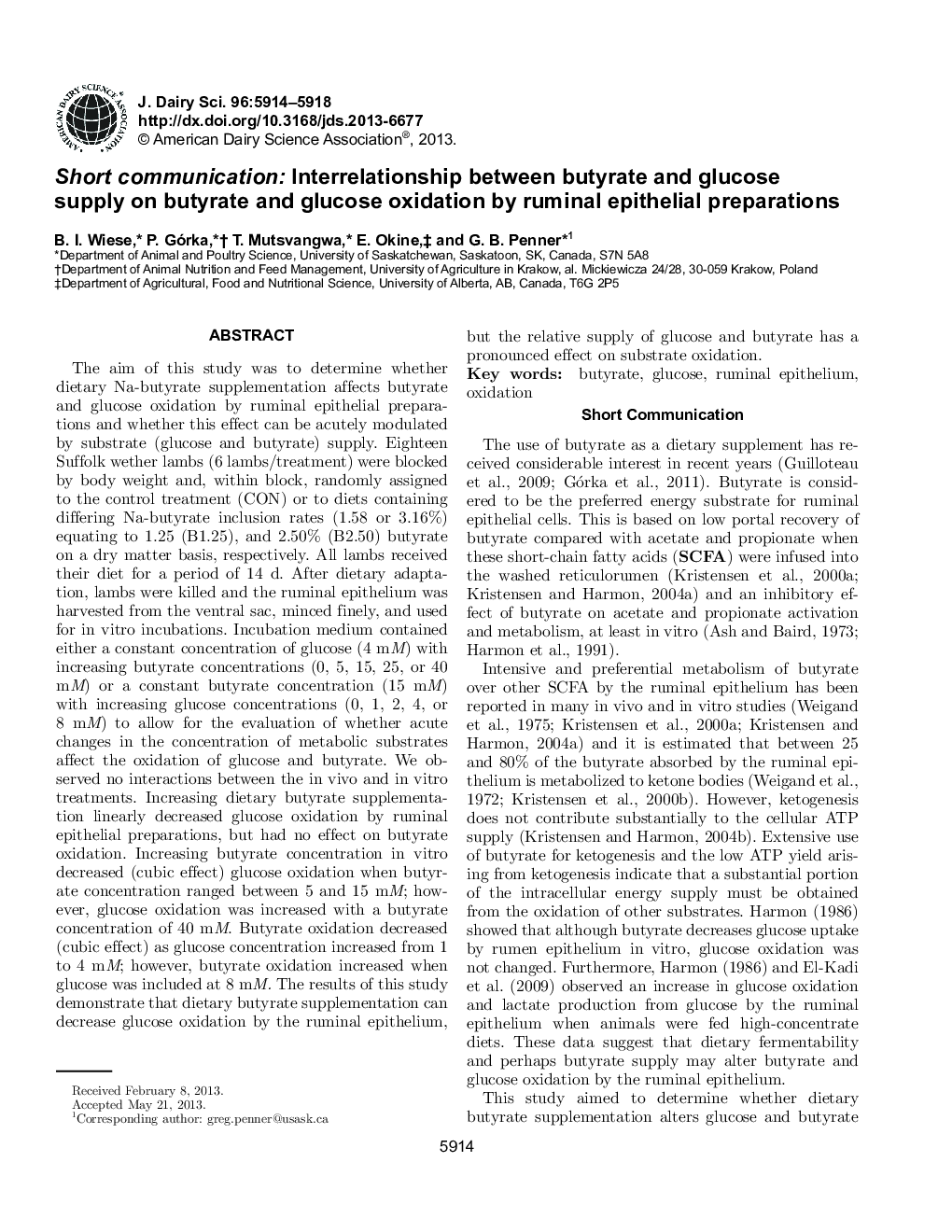| Article ID | Journal | Published Year | Pages | File Type |
|---|---|---|---|---|
| 10977614 | Journal of Dairy Science | 2013 | 5 Pages |
Abstract
The aim of this study was to determine whether dietary Na-butyrate supplementation affects butyrate and glucose oxidation by ruminal epithelial preparations and whether this effect can be acutely modulated by substrate (glucose and butyrate) supply. Eighteen Suffolk wether lambs (6 lambs/treatment) were blocked by body weight and, within block, randomly assigned to the control treatment (CON) or to diets containing differing Na-butyrate inclusion rates (1.58 or 3.16%) equating to 1.25 (B1.25), and 2.50% (B2.50) butyrate on a dry matter basis, respectively. All lambs received their diet for a period of 14Â d. After dietary adaptation, lambs were killed and the ruminal epithelium was harvested from the ventral sac, minced finely, and used for in vitro incubations. Incubation medium contained either a constant concentration of glucose (4Â mM) with increasing butyrate concentrations (0, 5, 15, 25, or 40Â mM) or a constant butyrate concentration (15Â mM) with increasing glucose concentrations (0, 1, 2, 4, or 8Â mM) to allow for the evaluation of whether acute changes in the concentration of metabolic substrates affect the oxidation of glucose and butyrate. We observed no interactions between the in vivo and in vitro treatments. Increasing dietary butyrate supplementation linearly decreased glucose oxidation by ruminal epithelial preparations, but had no effect on butyrate oxidation. Increasing butyrate concentration in vitro decreased (cubic effect) glucose oxidation when butyrate concentration ranged between 5 and 15Â mM; however, glucose oxidation was increased with a butyrate concentration of 40Â mM. Butyrate oxidation decreased (cubic effect) as glucose concentration increased from 1 to 4Â mM; however, butyrate oxidation increased when glucose was included at 8Â mM. The results of this study demonstrate that dietary butyrate supplementation can decrease glucose oxidation by the ruminal epithelium, but the relative supply of glucose and butyrate has a pronounced effect on substrate oxidation.
Related Topics
Life Sciences
Agricultural and Biological Sciences
Animal Science and Zoology
Authors
B.I. Wiese, P. Górka, T. Mutsvangwa, E. Okine, G.B. Penner,
